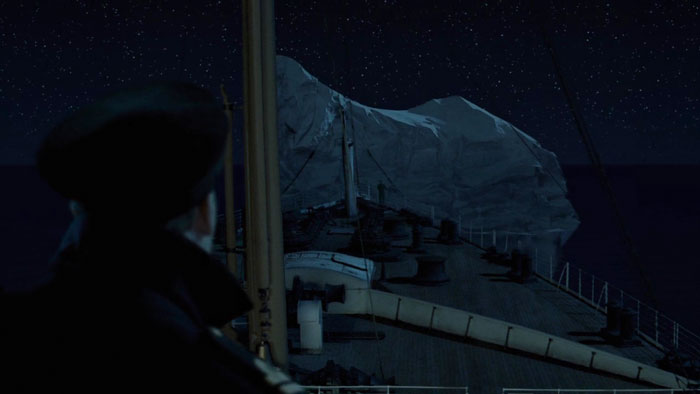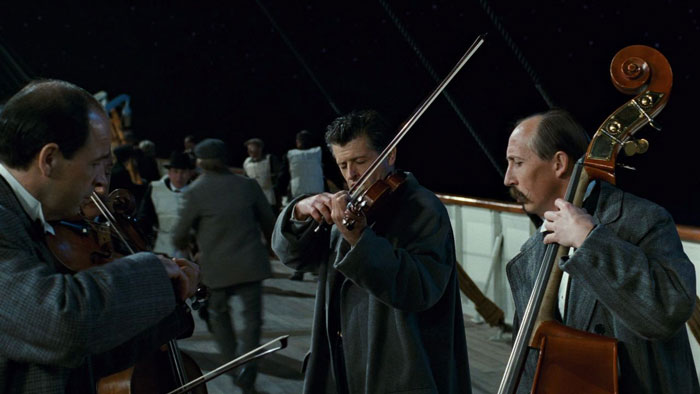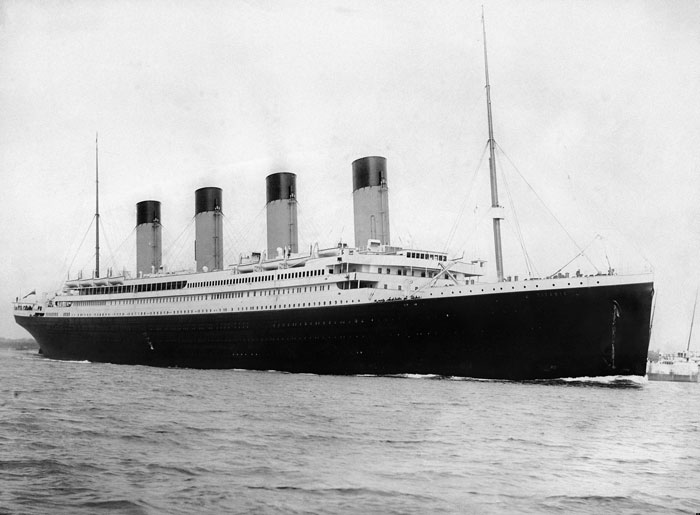With the waves crashing under its hull and a column of smoke rising high from the chimneys of the ship, the Titanic stands as one of the greatest ships in modern history. But with the release of the movie, some Titanic facts have become murky. For history buffs of the world, it is quite important to know the real facts about the Titanic and be able to educate other people about them. With so many facts about Titanic floating around the internet — why is it important to distinguish real facts and fiction about this grand ship?
For its time, the Titanic was one of the greatest luxury ships that could, theoretically, sail across the Atlantic ocean. With its only voyage, it became not only a reason for increased safety regulations, but also the titular character of the movie Titanic. After all, the Titanic facts you know most likely came from the movie. But with fiction comes the danger that one Titanic fact presented incorrectly can change our thinking about it. After all, sad Titanic facts were a bit dramatized to draw in more of our attention. Reality becomes much more interesting when you find out the real Titanic facts and history.
Looking for facts on the internet is like sailing through an uncharted ocean. It is unclear what is real and what is fictional. But no worries, like the northern star in the sky, the list we compiled below might be the navigational guide you need. Below, you might find some Titanic facts you didn’t know or which were shown in the movie with details changed for the drama. If the fact was able to raise some flags of curiosity, upvote it. If you know a bit more about the presented fact, comment down below and add some of your own information about the journey of that fact. Best of sailing through the facts!
#1
Without her husband Isidor, Ida Straus steadfastly refused to board the lifeboat.
Ida and Isidor Straus, the New York-based founders of Macy’s Department Store, offer what may be one of the most tragic love stories from the Titanic. Ida wouldn’t get in the lifeboat without her husband, who declined a space when it was offered to him because he knew there were still women and kids on board. They perished together.

Image source: titanicstory.wordpress.com, en.wikipedia.org
#2
The chief baker treaded water for two hours before being rescued.
Before being discovered, the head baker, Charles Joughin, is said to have floated in the sea for two hours. He insisted that the enormous amounts of whiskey he drank prior to the ship sinking kept his body warm enough to withstand the chilly water.

Image source: mcgill.ca, amazon.com
#3
The Titanic’s youngest passenger was a 2-month-old baby.
In addition to being the oldest survivor, Millvina Dean was also the youngest passenger on board. 2009 saw her passing away at the age of 97.

Image source: en.wikipedia.org, Stephen Daniels
#4
It’s possible that an optical illusion kept from detecting the iceberg in time.
Tim Maltin, a historian, claims that super refraction was probably induced by atmospheric conditions the night the ship sank, which may have concealed the iceberg. This may help to explain why the iceberg wasn’t discovered until the ship was too close to it to avoid it.
Image source: history.com
#5
Two young brothers survived the ship without a guardian.
The only children to survive the Titanic without a parent were Edmond and Michel Navratil, who made history in that regard. They were known as the “Titanic Orphans” and were two years apart in age. In order to take them to America, their father, Michel Sr., abducted them from their mother, with whom he had broken up. When he placed his kids in a lifeboat, that was the last time anyone saw him.

Image source: en.wikipedia.org, Underwood & Underwood
#6
Milton Hershey was supposed to be on the Titanic.
Milton Hershey, the entrepreneur behind the renowned Hershey’s Milk Chocolate Bar, sent a $300 payment to reserve his stateroom on the RMS Titanic. Hershey and his wife missed the trip because work took priority.

Image source: hersheyarchives.org, en.wikipedia.org
#7
On the day of the crash, a lifeboat practice was planned, but it was canceled for unknown reasons. Captain Edward Smith took the choice to call off the drill.

Image source: en.wikipedia.org, New York Times
#8
Only half the passengers would have been saved if the lifeboats’ total capacity had been used.

Image source: nonfictionminute.org, J.W. Barker
#9
Benjamin Guggenheim faced disaster in style.
When they learned that the ship was sinking, American businessman Benjamin Guggenheim and his servant Victor Giglio dressed into their best evening attire. According to reports, Guggenheim stated, “We’ve dressed up in our best and are prepared to go down like gentlemen.”

Image source: amazon.com, amazon.com
#10
A first class parlour suite aboard the Titanic cost $4,350 (£875), as opposed to the average cost of a First Class berth, which was £30 on the ship.

Image source: cruisehive.com, commons.wikimedia.org
#11
The Titanic took two hours and 40 minutes to sink.
The New York Times ran a headline stating that the Titanic sank four hours after colliding with the iceberg in its initial report on the tragedy. The fact that the ship sank more quickly was not widely known by the general public.

Image source: aeaweb.org, amazon.com
#12
The first lifeboat was released an hour after the iceberg struck.
It could appear logical for a ship to instantly release safety lifeboats upon hull breach. However, it took the Titanic an entire hour before it launched her first lifeboat.
Image source: historylink.org
#13
Tens of thousands of dollars were paid for the final lunch menu from the Titanic.
The final first-class lunch menu from the Titanic was purchased by a private collector for $88,000 on September 30, 2015, at an online auction. The collector overpaid by $18,000 compared to the initial ceiling price.

Image source: smithsonianmag.com, commons.wikimedia.org
#14
13 couples aboard the Titanic were on their honeymoon. The lifeboats were prioritized for newlyweds among other people.
Image source: genealogybank.com
#15
While building the Titanic 8 people died and 28 serious accidents, 218 minor accidents were also reported by the Harland and Wolff company.

Image source: encyclopedia-titanica.org, Robert John Welch
#16
Although the Titanic could have carried 64 lifeboats, it only carried 20.
Many of the Titanic’s lifeboats were not fully occupied with the number of passengers they were designed to carry.
Image source: wikipedia.org
#17
The Titanic sank very fast.
The ship split in two, with the bow falling at an estimated 35 mph to the ocean floor and the stern falling at an estimated 50 mph.

Image source: phys.org, amazon.com
#18
The iceberg that hit the ship may have jutted out 100 feet above water.
It’s estimated that the iceberg the Titanic struck was 50 to 100 feet above the water. It’s believed that the iceberg’s total length was between 200 and 400 feet.

Image source: ndtv.com
#19
When the ship sank, the sea water’s temperature was below freezing.
Water temperatures were as low as -2 degrees Celsius, according to measurements made by Captain Stanley Lord of the SS Californian, a ship that was nearby when the Titanic sank.

Image source: cruisehive.com, loc.gov
#20
The ship took over three years to build.
Beginning in 1909 and continuing for three years, the White Star Line’s Titanic was constructed at the Harland & Wolff shipyard in Belfast, Ireland.
Image source: history.com
#21
Less than a third of all people aboard the ship survived.
Only 705 passengers and crew members made it back home.
Image source: history.com
#22
Customers in first class had access to a heated pool.
First-class travelers received exquisite service and numerous luxuries since they could afford the tickets. First-class benefits for the wealthy included reading in the library, playing tennis on a squash court, dining in upscale Parisian cafés, and relaxing in tea gardens.

Image source: en.wikipedia.org, Francis Browne
#23
Six iceberg warnings before collision.
Captain Edward Smith apparently never received the most important iceberg warning due to the absence of the prefix MSG, which stands for Masters’ Service Gram. The captain would have had to personally acknowledge receiving the message under this designation. The senior radio operator dismissed the message as unimportant because it lacked the MSG prefix.
Image source: en.wikipedia.org
#24
The Titanic lies 12,600 feet underwater.
Nearly 2.5 miles below the ocean’s surface, around 370 miles off the Canadian province of Newfoundland, are the remains of the Titanic. The ship split in two, with a 2,000-foot gap in the seabed separating the bow and stern.

Image source: en.wikipedia.org, Courtesy of NOAA/Institute for Exploration/University of Rhode Island (NOAA/IFE/URI)
#25
The boat’s hull sustained a 300-foot gash from the iceberg.
Titanic Captain Edward Smith thought the ship had just skimmed the top of the iceberg, but when the crew examined the scene of the impact, they found that five compartments had already started to flood with water and that the bow was already starting to submerge.
Image source: maritimequest.com
#26
First-class travelers received an 11-course meal for their final dinner.
There were appetizers d’oeuvres like oysters, entrees like filet mignon, and sweets like chocolate and vanilla eclairs on the menu.
Image source: books.google.com
#27
Following the crash, just a small number of bodies were recovered.
There were only 306 bodies pulled from the icy water by rescue ships. Halifax, Nova Scotia, received a large number of the deceased.
Image source: reuters.com
#28
There were 840 staterooms in all, 416 in First Class, 162 in Second Class, and 262 in Third Class.

Image source: reference.com, Robert Welch
#29
The hymn “Nearer My God To Thee” was reportedly the band’s last song, according to both British and American passengers, but this cannot be verified. The hymn was performed to different melodies in the two nations, which increased the uncertainty.

Image source: en.wikipedia.org, amazon.com
#30
Only three of Titanic’s four funnels worked.
Four funnels were present on the sturdy ship, but only three of them actually discharged soot. The other was just employed for ventilation while adding to the ship’s regal appearance.

Image source: historyonthenet.com, Robert Welch
#31
The Titanic cost over $7.5 million to construct ($200 million with inflation).
Early 20th-century estimates for the enormous ship’s construction cost were $7.5 million, or $183.4 million in today’s value.

Image source: history.com, commons.wikimedia.org
#32
Finding the ship’s ruins took more than seven decades. After the Titanic sank, the wreckage wasn’t discovered until 1985. With the aid of a robot submarine, the debris was found by Dr. Robert D. Ballard of the Woods Hole Oceanographic Institution in Massachusetts and a group of American and French experts.

Image source: history.com
#33
There were only two bathtubs available for all third-class passengers.
On the Titanic, there were 706 third-class passengers who paid between 3 and 8 pounds to travel, yet there were only two bathtubs available to them.
Image source: books.google.com
#34
A specific bacteria is slowly consuming the wreckage.
At some point, rust-eating bacteria will completely consume whatever remains of the Titanic at the bottom of the ocean. ‘Halomonas titanicae’, a type of microbe that can attach to steel surfaces, creates the rusticles visible on the wreckage’s hull.

Image source: ocean.si.edu, Lori Johnston
#35
The ship was just under 900 feet long.
The Titanic was the largest ship at the time, measuring 882 feet and 9 inches in length. The Symphony of the Seas from Royal Caribbean, which measures close to 1,200 feet in length, is now the largest cruise ship.

Image source: titanicuniverse.com, Francis Godolphin Osbourne Stuart
#36
20 horses were needed to transport the main anchor.
More over 30,000 pounds, or 16 tons, were in the main anchor of the ship. Twenty horses were needed to haul the anchor two miles from the Netherton, England, casting site to the Dudley, England, train station in 1911.
Image source: globetrotting.com.au
#37
There were 40,000 fresh eggs aboard the ship.
To put it another way, there were around 3,333 dozen eggs on the Titanic, the bulk of which are assumed to have perished together with the ship.
Image source: lovefood.com
#38
6,000 artifacts were recovered from the wreckage site.
A lot of people are interested in Titanic-era artifacts. A violin that fetched $1.7 million at a UK auction house in 2013 was one among the 6,000 artifacts that were discovered. 2011 saw the $336,000 sale of the Titanic’s ship plan.

Image source: lastampa.it, en.wikipedia.org
#39
The iceberg was first spotted at 11:30 p.m. on April 14.
The iceberg was discovered by a lookout, who hurriedly rang the alarm bell. To avoid hitting it, the ship quickly turned at a severe angle, but it was already too late.

Image source: en.wikipedia.org, amazon.com
#40
There are a lot of theatrically released documentaries and films about the Titanic. The most notable ones are:
“Titanic” by Jean Negulesco was released in 1953, “A Night to Remember” by Roy Baker in 1958, and “Titanic” by James Cameron in 1997.

Image source: wikipedia.org, amazon.com
#41
Edward John Smith was the captain of the RMS Titanic, and perished when the ship sank on her maiden voyage.

Image source: en.wikipedia.org, amazon.com
#42
John Jacob Astor IV was the wealthiest man aboard.
With an estimated wealth of almost $150,000,000 at the time, the heir to the Astor family fortune was by far the richest person aboard the ship. He perished along with the ship.

Image source: nationalarchives.gov.uk, en.wikipedia.org
#43
The first lifeboat could have held 65 people, but only 28 individuals managed to board it.
Image source: history.com
#44
Three dogs were rescued from the ship. Nine dogs were on board, but only three made it out alive: two Pomeranians and a Pekinese.
Image source: liverpoolmuseums.org.uk
#45
The Titanic slipped beneath the ocean’s surface at 2:20 a.m. on April 15, 1912. The ship had struck an iceberg two and a half hours before.
Image source: https://books.google.com
#46
The time between the iceberg detection and the accident was not nearly a full minute.
The Titanic is claimed to have struck the iceberg after only 37 seconds had passed when the iceberg was first seen.
Image source: historic-uk.com
#47
There were 8 musicians on board the Titanic, all of whom worked for the Liverpool-based agency C.W. and F.N. Black.

Image source: en.wikipedia.org, en.wikipedia.org
#48
Only 23 of the 908 crew on board were female.
True gender equality was present in the first class. There were nearly equal numbers of male and female passengers. On the other hand, there were 70% more men than women in third grade. The group was mostly made up of men. There were 867 males on the crew and only 23 women. However, only 20 of the female crew members made it to land, compared to 191 of the men.
Image source: eu.usatoday.com
#49
New evidence suggests a fire in the ship’s hull caused the ship’s demise.
The accident may have been caused by a fire that broke out on board the ship just before it left port, according to the documentary “Titanic: The New Evidence.” Journalist Senan Molony claims that the continuous fire in the ship’s hull may have caused the metal to deteriorate. Prior to the ship’s departure, the fire raged for three weeks at temperatures of 1,800 degrees Fahrenheit.
Image source: huffpost.com
#50
40,000 people met the RMS Carpathia when it arrived in New York with the 700+ survivors.

Image source: books.google.com, Bain News Service
#51
It is generally believed that the ship carried approximately 2,200 passengers and crew.
Image source: britannica.com
#52
Some 100,000 people attended the launch of the ship On May 31, 1911, at Belfast, the enormous White Star liner entered the water for the first time.
The just-over-minute-long launch was viewed by an estimated 100,000 people, or nearly one-third of Belfast’s population.
Image source: history.com
#53
The ship burned an estimated 825 tons of coal per day.
The Titanic was far from a light vessel, weighing nearly 46,000 tons. This massive vessel heated 29 boilers, consuming an estimated 825 tons of coal per day in 159 furnaces.
#54
Royal Mail Steamer (RMS) Titanic was the official name of the ship.
Since the middle of the 19th century, people have used the abbreviation RMS for Royal Mail Steamers. The distinction served as a badge of excellence because mail delivery was required on time, and ships were fined for late arrivals. The appellation was given to about 200 ships, including the Titanic.
Image source: en.wikipedia.org
#55
The Titanic’s top speed was 23 knots.
A speed of 23 knots is about similar to 26 mph. The typical cruise ship travels at 20 knots, or 23 mph, today. The Harmony of the Seas from Royal Caribbean has a top speed of 25 knots or just about 29 mph.
Image source: simple.wikipedia.org
#56
Over 100,000 pictures were taken of the shipwreck in 2012 by underwater robots.
Over 100,000 images of hundreds of objects that were probably a part of the ship were captured by an expedition that sent underwater robots to the wreckage and used sonar imaging to study the objects. The 3-by-5-mile debris field might be mapped by
Image source: theglobeandmail.com
#57
The titanic was launched by Robert Falconer Keith, the head foreman shipwright at Harland & Wolff.
Image source: titanicbelfast.com
#58
Liquor and cigars were easily accessible onboard.
Onboard the ship, there were 1,500 bottles of wine and 20,000 bottles of beer. There was plenty of alcohol onboard, and there were also 8,000 cigars, all of which were accessible to first-class passengers.
Image source: 247wallst.com
#59
The Titanic was on her maiden voyage, a return trip from Britain to America. The outward route was to be Southampton, England – New York, USA.
Image source: britannica.com
 Follow Us
Follow Us





